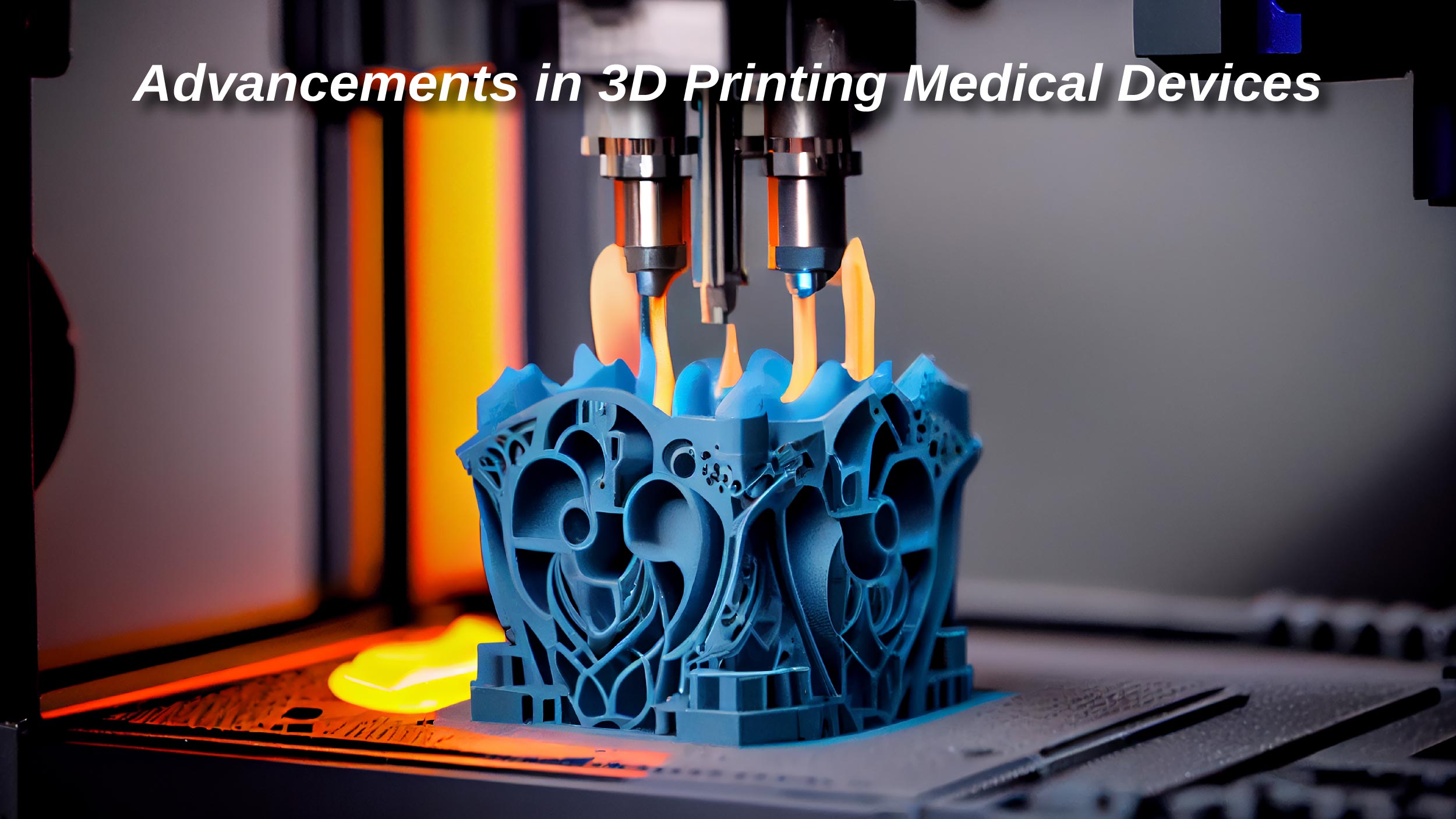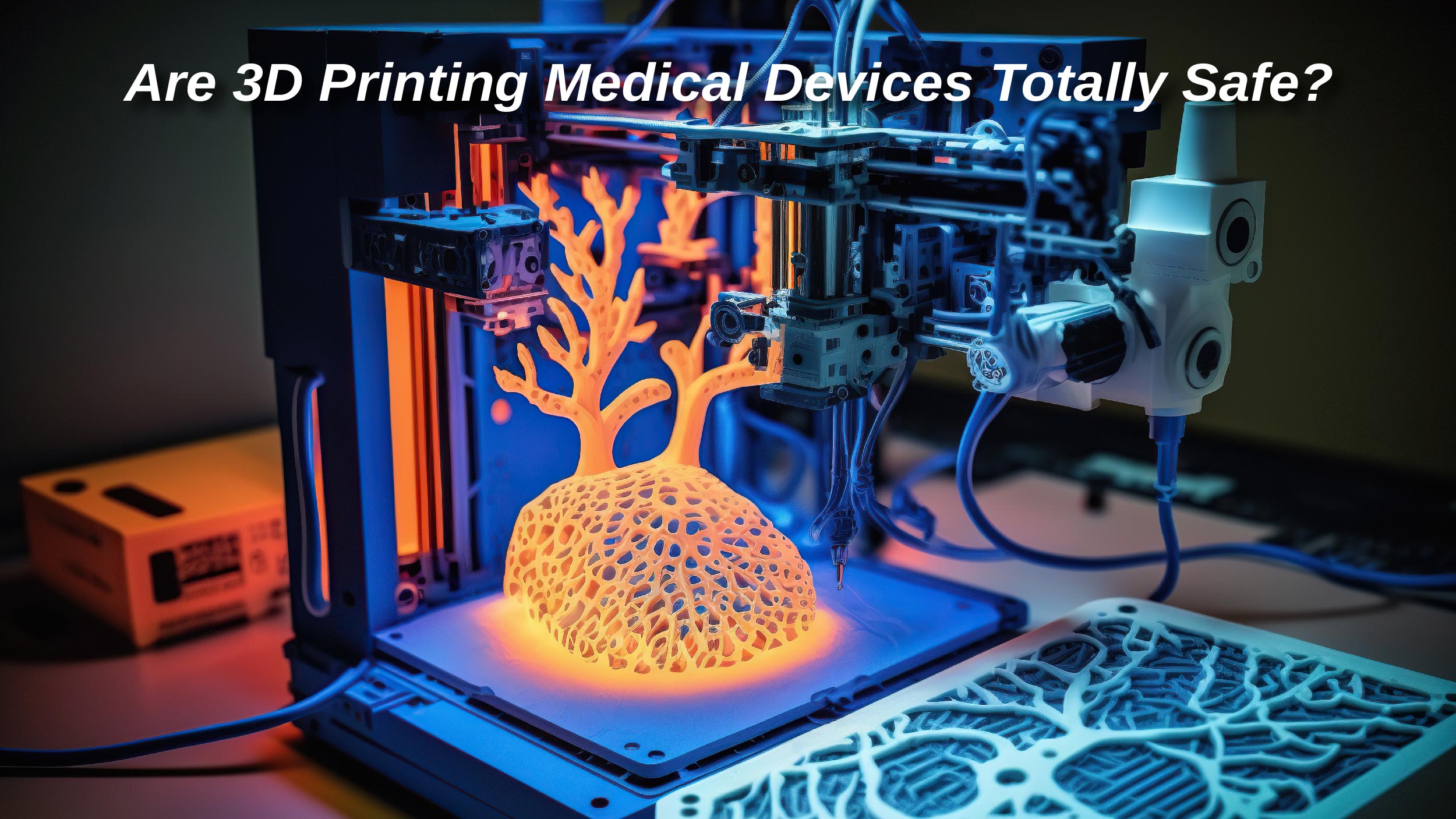3D printing technology has revolutionized the manufacturing process across various industries, and the field of medicine is no exception. The ability to create three-dimensional objects layer by layer has opened up new possibilities in producing medical devices. From surgical instruments and implants to prosthetics and dental restorations, 3D printing is transforming the way medical devices are designed, customized, and manufactured.
This blog will explore the realm of 3D printing medical devices, delving into their applications and safety considerations.
What are 3D Printing Medical Devices?
3D printing medical devices involve the production of various medical tools using 3D printing technology. This method allows designers and manufacturers to craft devices with intricate internal structures tailored to a patient’s unique anatomy. The flexibility of 3D printing simplifies modifications without requiring additional tools, making the manufacturing process cost-efficient and streamlined.
The applications of 3D printing in the medical field are extensive. Examples of medical devices produced through 3D printing include orthopedic and cranial implants, surgical instruments, dental restorations like crowns, and external prosthetics. Particularly beneficial in dentistry, this technology allows the direct 3D printing of patient-specific devices such as surgical guides, splints, temporary and permanent restorations, and dentures based on individual imaging data. Other applications encompass custom-fit ear devices, durable prosthetics, orthotics, and more.
Advancements in 3D Printing Medical Devices
Let’s look at the unique capabilities and technological advancements in the 3D printing medical devices industry.
Personalized Devices
3D printing technology, or additive manufacturing (AM), offers a paradigm shift in medical device production, particularly in orthopedics, reconstructive surgery, prosthetics, dentistry, orthotics, and veterinary medicine. Unlike traditional mass production, 3D printing allows extensive personalization, tailoring devices to individual patient needs and unique anatomy. Examples include orthopedic implants adapting to bone contours and prosthetic leg sockets adjusting stiffness based on the patient’s body mass index and lifestyle. Personalized medical devices provide benefits such as improved aesthetics, faster procedures, and reduced pain, playing a crucial role in the future of healthcare.
Also Read: Blockchain in Insurance: From Risk Management to Rewards
Biologically Relevant Structures
3D printing enables the creation of personalized medical devices with architected materials, providing superior performance opportunities. Architected materials, with targeted performance properties, allow the engineering of physical characteristics like stiffness or impact absorption. Use cases include osseointegration, mechanical biocompatibility, and 3D-printed foams, each offering distinct performance benefits.
Osseointegration
Porous metal foams in 3D printing medical devices accelerate osseointegration by fine-tuning porosity, shape, pore size, and distribution. These implants, often used in joint replacements, eliminate the need for cement, reducing operating room time by 25%.
Mechanical Biocompatibility
To mitigate the risk of “stress shielding” in metal implants, 3D printing uses lattice structures like TPMS, stochastic, and graph lattices. These structures mimic bone properties, preventing complications and ensuring implant success.
3D-Printed Foams
Polymer lattices in 3D-printed foams offer superior control and impact absorption, commonly used in prostheses to create sockets with dynamic behavior.
Design Automation
Automated design processes are crucial in 3D-printing medical device development. This approach allows rapid exploration of the design space, identification of critical parameters, and optimization of design variables. Automated workflows ensure reproducibility and consistency, resulting in significant time and cost savings in the final product.
Are 3D Printing Medical Devices Totally Safe?
Ongoing research and regulatory evaluations focus on the safety and effectiveness of 3D printed medical devices in comparison to traditional counterparts. The U.S. Food and Drug Administration (FDA) plays a crucial part in establishing the safety & efficacy of these devices, categorizing them based on risk and applying varying levels of oversight.
The FDA closely regulates the manufacturing process and output of 3D printers if the output qualifies as a medical device. The regulatory review process depends on factors like intended usage, potential risks, and classification. Despite the promising aspects of customization and rapid prototyping offered by 3D printing medical devices, challenges exist.
Issues such as meeting regulatory requirements, including large randomized controlled trials and manufacturing regulations, may pose barriers to widespread availability. Fulfilling more demanding FDA regulations could potentially hinder the broad-scale availability of 3D printed medical devices.
How 3D Printing Medical Devices Are Revolutionizing Joint Surgery
SI-BONE, a medical device company, has introduced an innovative osseointegrative lattice structure for use in minimally invasive joint surgery, enhancing bone fusion support. Remarkably, the engineering team successfully applied this structure to a product family comprising over 70 unique parts within six hours, ensuring traceability. The key benefits of this design include time efficiency, reduced operational risk, enhanced reliability, and improved reproducibility. Recognizing its potential, the FDA awarded this breakthrough technology the Breakthrough Medical Device designation, not only benefiting SI-BONE but also holding promise for advancements in the broader medical device industry.
Final Takeaway
3D printing medical devices represent a transformative frontier in healthcare, offering unprecedented opportunities for customization, rapid prototyping, and patient-specific solutions. While the promise of personalized medical devices is evident, challenges such as stringent regulatory requirements and manufacturing regulations need to be navigated for widespread availability. As technology evolves and regulatory frameworks adapt, 3D printing medical devices hold the potential to revolutionize patient care, providing innovative solutions tailored to individual needs and advancing the landscape of modern healthcare.






